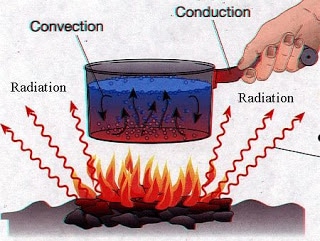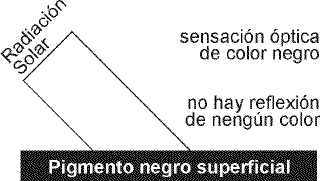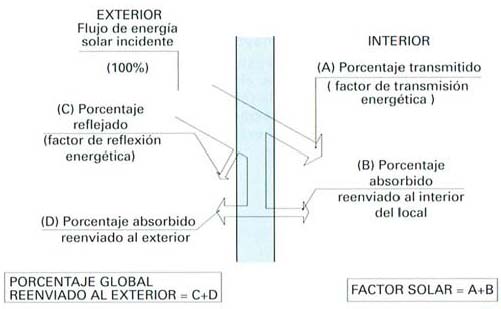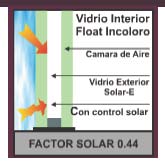-
Phone Number
-
Email Address
One of the key points in the envelope of a building or property and that has a decisive influence on the energy demand are the gaps or windows. These are formed by the carpentry and the glass.
First of all, we must analyze and understand that shape can influence the composition of the gap in the demand energy, I will try to make a tour among all the concepts that define them (referred to the demand energy).
This will make our knowledge reach a level acceptable decision, according to the proposed object; that is to say, we will help reduce CO2 emissions, because we will need less non-renewable energy to achieve the theoretical comfort within the spaces of our buildings.
With this premise, we will seek that the composition of our holes are such that in summer not much heat enters through them into our spaces and that in winter, the heat from the heating systems does not escape outside. We will bear in mind that making a decision rational in this matter is not an easy task, because in said analysis involves factors that influence, directly or indirectly, on the transmission of heat:
Assuming that all bodies are interacting with the middle needing a balance; we affirm that the process of transmission of heat always occurs from a hotter space or body towards one less hot.
The outside will always be at a different temperature than inside our buildings; heat will be transmitted from the hottest space to the least hot through the elements that make up our window. This way of heat transmission is called driving .
When the sun's rays fall directly on our windows, part of the heat will be transmitted to the interior of the building. This form of heat transfer is called radiation . The air can also transmit heat to the interior or exterior of our buildings, calling this shape by convection .

When we are clear about the concepts outlined, we can define the thermal transmission or transmittance (U) , as the amount of heat that is exchanged between the interior-exterior in the unit of time, either by conduction, radiation or convention, when between the surface Outside and inside there is a temperature difference.
Therefore, the smaller the thermal transmittance, the lower the energy transfer between both faces, and therefore better insulating capacity will have the hole or window It is measured in W/m 2 K (amount of heat per hour, expressed in watts, transmitted to through an area of 1 m2 for each Kelvin degree of difference between inside and outside).

Heat is not transmitted in the same way through glass as through plastic. He glass conducts heat faster than glass plastic. We could also say that the glass offers less resistance to the transmission of heat than plastic.
This fact tells us that there is a characteristic intrinsic of the materials. This is known as coefficient of conductivity thermal (λ) . Each material, according to its composition, has a coefficient that characterizes it, transmitting or resisting more or less heat.

It is measured in W/mK (amount of heat, expressed in watts, that passes through the unit area of a sample of material, of infinite extension, plane-parallel faces and thickness unit, when between its faces a difference of temperatures equal to unity).
The Sun transmits energy to the outside through a set of radiation and electromagnetic waves called radiation solar. These waves or electromagnetic radiation can manifest itself in various ways, such as radiated heat, light visible, X-rays or gamma.
In the set of these radiations or energies emitted by the Sun, there is a group that the human eye can perceive and another group that is unable to capture. It is known as spectrum visible and invisible respectively. within the spectrum visible we have visible light.
In the invisible spectrum we have non-visible light, which it is differentiated into two groups; infrared rays (rays infrared, television signals, radio signals, microwaves, thermal radiation) and ultraviolet rays (rays ultraviolet, X-rays, gamma rays). The color of the objects depends on what happens when light (part of the radiation solar that can be perceived by the human eye and interpreted through the brain in different colors) falls on it.
Materials absorb some colors and reflect others. The colors we see are the reflected colors.

We add as an example a green leaf, it absorbs all colors except green, which is reflected, captured by the human eye and interpreted by the brain in that color. Black materials absorb all colors and does not reflect any (absence of color). To the On the contrary, the white colored materials reflect all the colors.


Consequently, we can say that materials absorb and they emit energy. (We can see more of the color from this article)
It is the property of a material that determines the amount of incident radiation that it can absorb. Its value is within the range 0<α<1 or 0%<α<100% A black body absorbs all the radiation incident on it, it is a perfect absorber (α =1 or 100%)

The relationship between the total energy that enters a room at through a glazing and the solar energy that affects on said glazing. This total energy is the sum of the solar energy that enters by direct transmission and the transferred due to the glazing inside the premises as a consequence of its energy absorption.
Thus, a glass that has a solar factor of 40%» means It only lets through 40% of solar energy. Thus, the lower the percentage of solar factor of a glass, the greater the protection it provides against the energy solar.


A medium of thermal transmission could be air as we saw earlier, therefore, an important concept to consider would be the permeability of the carpentry to this transfer medium. We define the permeability to air, as the amount of air that passes through through a closed window. It is measured in m3/h.

If we look at the painting, for a window to be classified as Class 4, should not have an infiltration greater than 3m 3 /h (per square meter of surface) and 0.75 m 3 /h (per linear meter of board).
Now, we have enough knowledge to be able to interpret the data that characterizes the composition of our holes, and to be able to decide, which system of the existing ones we need to improve the energy demand of our buildings.
To finish and in summary say that the window frame represents between 25% and 35% of the window surface and its The main property is Thermal Transmittance.
The most common materials are metallic, metallic with thermal break, wood, PVC and mixed (wood-aluminium, metal-core polyurethane, metal with foam-filled thermal break insulation, etc).


———————————————–
Article written by Gustavo A. Fdez. Bermejo (Technical Architect and Energy Consultant) Access to your website... http://gustavoafernandezbermejo.blogspot.com.es/ . Home Repair Care collaborator